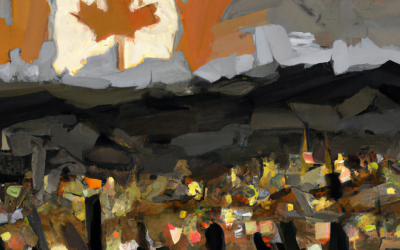A national panel on First Nation elementary and secondary school education is calling for more funding and the creation of a First Nation education system.
Most on-reserve First Nations lack a meaningful ‘system,’ including school boards or anything comparable to a provincial ministry of education. The First Nation education culture is about Aboriginal Affairs sending cheques without meaningful standards or enforcement. For many reserve education directors signing an agreement assuring students transferability to off-reserve schools has become a joke.
Choice for Aboriginal families must be front and centre. Aboriginal parents should have a maximum range of choices, even for status Indians living on reserves.
Fixing Aboriginal education should not just be about enlarging reserve school budgets and creating First Nation school bureaucracies. Equally funded band schools won’t guarantee accountability or better student outcomes.
The default option for most on-reserve families is to send their children to band schools that may or may not be run well. Likely bad if the band council has not insulated the education authority from political meddling.
On many First Nations, chief and council jealously guard their school age populations as if they were their possession. If a family wanted to transfer their child from the band school to a nearby public school or farther, why should that be prevented?
Award-winning Native American author Sherman Alexie illustrated this dilemma in his semi-autobiographical novel The Absolutely True Diary of a Part-Time Indian. Alexie grew up on the Spokane Indian Reservation in Washington State and his central character Arnold Spirit Jr. is based on his life when he encountered persecution when he left his tribal school for a nearby ‘white’ high school to receive a better education. Despite love for his reservation, the character realized he can reconcile his Native American identity with his decision to seek a better life.
Ottawa could help First Nation families by putting them in the driver’s seat by permitting more Aboriginal Affairs education funding to flow through them as opposed to band councils or education authorities.
First Nations should allow their imaginations to move beyond locally operated band schools. Indigenous charter or independent schools are one model. Charter schools are public schools that cannot charge fees but are given more latitude in instructional techniques and curriculum, although they must still follow provincial curriculum. Alberta is the only province that allows formal charter schools. The Mother Earth’s Children’s Charter School is Canada’s only indigenous charter school. Located west of Stony Plain, just outside Edmonton, the school sits on over 100 acres of land and takes land-based learning seriously. The school has about 100 students, 85 per cent of which are indigenous and five per cent non-Aboriginal. The majority of students come from nearby Paul First Nation. On-reserve students are funded through a tuition agreement with Aboriginal Affairs and non-Aboriginals are funded by Alberta. Despite political challenges over the years, the school is committed to its twin goals of academic achievement and spiritual connectedness. Despite lower scores, the staff is committed to improvement.
Indigenous charter schools are no panacea. Charter schools are not perfect. Some are bad and some are good. Some say they offer an education advantage; other studies say they are no better than conventional schools. But, they have been demonstrated to help disadvantaged populations. This is why they are popular in the U.S. inner city where they have helped African-American and other minority youth. Indigenous charter schools are found in several states. Native Hawaiian charter schools have seen growing improvement among students.
While imperfect, charter schools have flexibility to find solutions that ‘fit’ within local indigenous contexts.
However, education experts like John Richards at Simon Fraser University’s School of Policy Studies stresses Aboriginal students tend to perform better when they are not the majority as there is a ‘negative peer effect’ that pulls down standards due to shared social problems.
For this, the answer is more choice for indigenous families.


